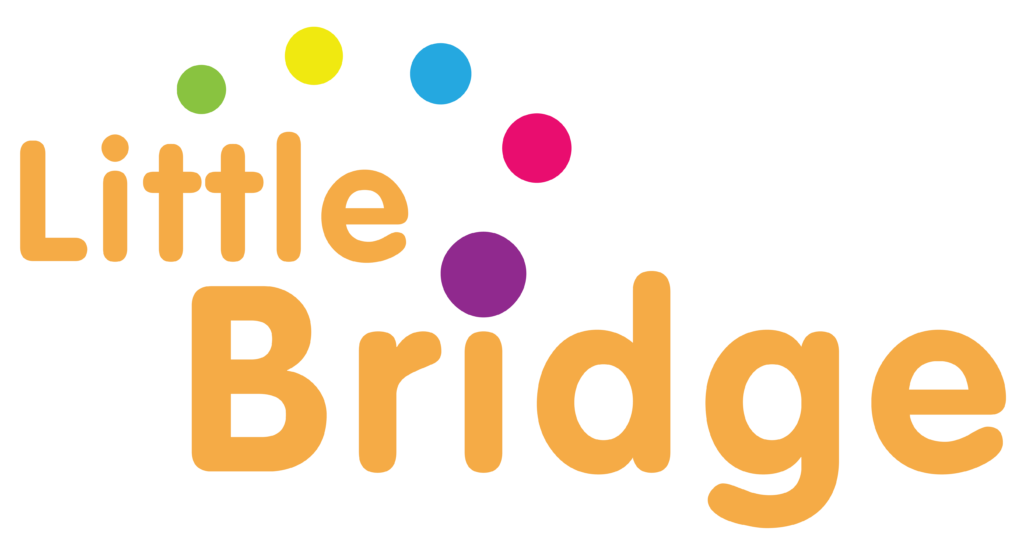Paul Rogers, author of Little Bridge, shares five ways to help your child learn English.
A life lived in many languages
I’ve spent a lot of time throughout my life, including my professional life, thinking about language. From my school days, when I first discovered there were languages other than my own, to the year I spent in Andalucia, getting to grips with Spanish without the help of lessons or even a dictionary, I have experienced radically different ways of learning languages.
As a language teacher, and a writer of language learning resources, I’ve also shepherded students over the hurdles of exams and watched, with some dismay, at the dwindling numbers of students who are interested in taking on the challenge. In the UK over the last fifteen years, though the take-up of Spanish and Mandarin have increased, the overall numbers taking a language to exam level have almost halved.
And yet, language is as much a part of human life as the air we breathe. It’s a skill that almost every child acquires, without thinking. And as anyone who has ever read (or, in my case, written) books for children knows, listening to and learning new words is a joyous experience. Children relish the sounds, they love to imitate them and they recognise the power that words possess.
So when I think about encouraging children to learn a new language, a few principles come to mind:
Five ways to help your child learn English, Tip 1:
Have fun. Enjoying and employing the playfulness of language is fundamental to opening up every child’s receptiveness to learning something that otherwise might seem abstract or academic. Words are active conductors of meaning, the sounds they are made up of are like musical notes, sometimes sweet, other times harsh, or even plain ridiculous.
Helping children to have a laugh whilst learning is probably one of the most life-affirming and pedagogically effective tools at your disposal. Take the rumbustious poems of Michael Rosen for example, or the imagination-stretching yarns of Roald Dahl and the intriguing naming conventions in JK Rowling’s universe, that take her readers into the world beyond Platform nine and three quarters. They are all extraordinary examples of how words give joy. So why not use this to elevate second/foreign language learning to a thing of play?
Five ways to help your child learn English, Tip 2:
Tell stories, including your own. Words are what distinguish us as humans. So it’s unsurprising that, with language learning, giving words context and creating characters who use them is the perfect way to cement language, both in the imagination and as part of the emerging language ‘libraries’ of young learners.
With context and character, we can ensure children really want to understand, create circumstances when they forget this is ‘a foreign’ language, because what’s really important is the story that’s unfolding and the characters who are growing before their eyes. Lift language off the pages and make it something alive, something that children are eager to grasp. And provide them with all the ‘clues’ necessary to give meaning.
Five ways to help your child learn English, Tip 3:
Lose the fear. Learn language in clusters of ‘useful things’, words and phrases that children really feel at home with and want to use themselves, without wondering too much about the grammatical skeleton that holds them together. Make it instantly applicable to what they want to say, especially when they want to interact with someone else.
And when it’s time to examine the bones of the language (because children usually can, if it’s presented appropriately, see the value of recognising patterns), make it memorable. Any child who’s a dinosaur enthusiast is likely to be fascinated by skeletons. They are excited to understand how the Diplodocus skeleton is the enabler of its ferocious exterior, determining what it can and can’t do. In the same way, it’s important to present the structures and patterns of a language in a way that both enlightens and delights.
Five ways to help your child learn English, Tip 4:
Loosen up. Don’t worry too much about the order of language acquisition that an external curriculum might dictate. No infant is restricted by this notion of a ‘right order’ to learn words. It has always frustrated me why the past or future tenses are not something that language learners are exposed to from the offset. If language is to serve any human purpose, then it has to reflect life’s experience, which is not (for most people anyway!) simply rooted in the present.
There is a notion of perceived ‘difficulty’ that seems to have shaped this approach. But having observed and experienced first hand effective language learning, I’d say that learning on a ‘need to know’ basis trumps concerns about complexity. If we had to understand how we achieve many everyday functions, I wonder how many we’d think were too difficult to try!
Five ways to help your child learn English, Tip 5:
Focus on communication. This is a primary function for language. It’s driven by our desire to connect, including with words. It’s no surprise that ‘Show and Tell’ has featured, one way or another, in primary school classrooms for generations. Sharing things about ourselves is fundamental to who we are. When people communicate, they use gestures, punctuating language with various elements of mime. This isn’t a weakness, it’s a fundamental skill we use, even when we’re fully conversant in a language.
Imagine how dull, strange even, it would seem to talk to someone who simply spoke, without employing any of the other communication aids at their disposal. Only when robots develop personalities can they get near to being a human communicator. Making human connections is a prime driver for language learning. So build language to empower children to use it meaningfully as soon as possible. Then you’re sowing seeds in fertile ground and ensuring it all makes sense.
Communication-led language learning
In an era where personalised learning, asynchronous learning and machine learning are coming of age, it seems all the more extraordinary to me that anyone would try and deliver language learning with anything other than a playful, communication-led approach.
Allowing technology to craft individual pathways already means that the original notion of a ‘course’ is becoming obsolete. Personal goals are what everyone sets, even unconsciously, in different aspects of life, as they build skills to achieve them. Let’s make sure that we’re focused on fun and practical application in language learning – that is, the usefulness for human connection. Perhaps then, more of us will experience success – and we’ll enjoy the journey too!
Little Bridge’s mission is to create a safe space for young children (aged 6-12) to connect, make new friends and learn to communicate (kindly!), in English.
Take the first steps to explore this exciting social learning community, by creating your free Parent Account. Find out more here.
Written by Paul Rogers, author of Little Bridge
If you enjoyed reading ‘Five ways to help your child learn English’, you can read more blogs by Paul Rogers here.


